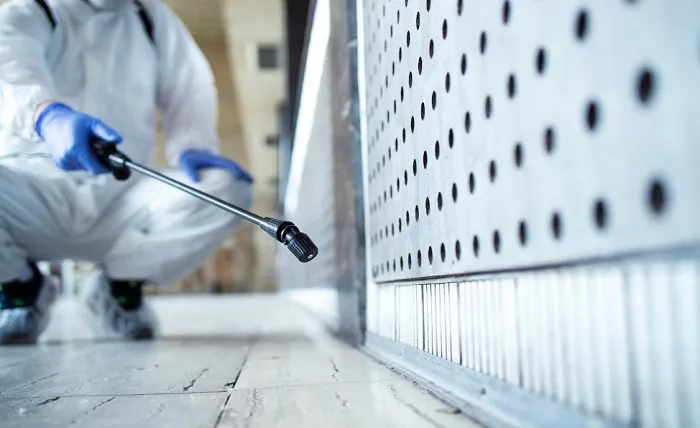Are bed bugs invading your peaceful sleep, turning your cozy sanctuary into a battleground of itchy bites and sleepless nights? Fear not, for the battle can be won with the power of pest control. Like a mighty warrior armed with effective techniques, pest control can defend your home from these elusive pests.
But before you engage in this epic struggle, it is crucial to understand the effectiveness of pest control against these bloodsucking adversaries. In this article, we will delve into the depths of bed bug infestations and explore the various pest control methods available. From the scorching heat treatments to the strategic use of chemicals, we will analyze the effectiveness of each approach.
Furthermore, we will uncover the secrets of non-chemical alternatives, providing you with a comprehensive understanding of how best to combat these resilient creatures. So, ready your weapons and join us as we embark on a quest to discover if pest control is truly effective against bed bugs.
Identifying a Bed Bug Infestation
You’ll want to be on the lookout for small, reddish-brown insects crawling on your mattress and hiding in the crevices of your furniture, as these could be signs of a bed bug infestation. Identifying a bed bug infestation is the crucial first step in effectively dealing with these pests.
To ensure accurate detection, it’s advisable to contact professional bed bug exterminators who specialize in bed bug pest control. These experts have the knowledge and tools to conduct a thorough bed bug inspection, identifying all the areas where these pests may be hiding.
By hiring professionals for bed bug removal, you can be confident that the infestation will be dealt with effectively. Their detail-oriented approach will ensure that all bed bugs are eliminated from your home, providing you with peace of mind and a bed bug-free environment.
Common Pest Control Methods for Bed Bugs
When it comes to dealing with pesky critters like bed bugs, one option you might consider is hiring a professional exterminator. These experts are equipped with a range of pest control methods that have proven to be effective in eliminating bed bug infestations.
One common method is heat treatment, where the affected area is heated to a temperature that’s lethal to bed bugs and their eggs. This method is highly effective in reaching deep into furniture, cracks, and crevices where bed bugs may hide.
Another method is chemical treatment, where insecticides are used to kill bed bugs on contact. This method often requires multiple treatments to ensure complete eradication.
Additionally, professional exterminators may use steam treatment, vacuuming, and encasing mattresses and furniture to prevent bed bugs from spreading. With their knowledge and expertise, professional pest control methods can effectively eliminate bed bugs and provide you with peace of mind.
Heat Treatment: A Powerful Solution
Imagine the incredible power of heat treatment, a solution that can eradicate those relentless creatures and provide you with the peace of mind you’ve been yearning for.
Heat treatment is considered one of the most effective methods to eliminate bed bugs. This process involves raising the temperature of the infested area to a level that is lethal for these pests. The intense heat penetrates into cracks and crevices where bed bugs hide, ensuring complete eradication.
Unlike chemical treatments, heat treatment doesn’t leave behind any harmful residues, making it a safe and environmentally friendly option. Moreover, this method is highly efficient, as it can kill bed bugs in all stages of their life cycle, including eggs, nymphs, and adults.
Heat treatment offers a powerful solution to the persistent problem of bed bug infestations, providing you with long-lasting relief and a bug-free environment.
Chemical Treatments and Their Effectiveness
Chemical treatments can be an effective option for addressing the issue of unwanted guests in your living space. When it comes to bed bugs, there are several types of chemical treatments available, such as insecticide sprays, dusts, and foggers. These treatments work by targeting the bed bugs directly, killing them on contact or through ingestion. They can also have residual effects, which means they continue to work even after the initial application
However, it’s important to note that not all chemical treatments are equally effective against bed bugs. Some bed bug populations have developed resistance to certain chemicals, making them less effective. Additionally, bed bugs can hide in cracks and crevices, making it difficult for the chemicals to reach them.
Therefore, it’s crucial to carefully follow the instructions provided by professionals and use chemicals as part of a comprehensive approach that includes other methods, such as heat treatment and mattress encasements.
Non-Chemical Approaches to Bed Bug Control
To effectively address the issue of unwelcome guests in your living space, consider exploring non-chemical approaches that offer alternative methods for managing and eradicating these persistent intruders. Non-chemical approaches to bed bug control can be just as effective as chemical treatments without the potential health risks or environmental concerns.
Here are three sub-lists outlining some of the most common non-chemical approaches:
- Heat treatments: Using high temperatures to kill bed bugs and their eggs is an effective method. Heat can penetrate deep into furniture, mattresses, and cracks, ensuring that all bed bugs are eliminated. Professional heat treatment providers use specialized equipment to safely and effectively raise the temperature in the infested area.
- Steam treatments: Steam is another non-chemical approach that can kill bed bugs and their eggs. When applied directly to infested areas, the high heat of the steam can effectively eradicate the pests. However, it’s important to use a steam cleaner specifically designed for bed bug control to ensure optimal results.
- Vacuuming and cleaning: Regular vacuuming and thorough cleaning can help manage and control bed bug infestations. Vacuuming can physically remove bed bugs, eggs, and nymphs from infested areas, reducing their population. Cleaning infested items with hot water and detergent can also help eliminate bed bugs.
By exploring these non-chemical approaches, you can effectively combat bed bugs without resorting to potentially harmful chemical treatments. (You should Read – Trails Carolina Horror Stories)
Evaluating the Success of Pest Control Methods
You can gauge the triumph of your chosen methods by observing the absence of these unwanted intruders scurrying through your living space like tiny thieves in the night. Evaluating the success of pest control methods for bed bugs is crucial to ensure efficiency.
One effective approach is heat treatment, where high temperatures are used to eliminate bed bugs and their eggs. This method has shown promising results, as it can penetrate deep into cracks and crevices where these pests hide.
Another method is the use of steam, which also kills bed bugs by exposing them to high temperatures.
Additionally, vacuuming can be an effective way to physically remove bed bugs and their eggs from infested areas.
Regular inspections and monitoring are essential to assess the effectiveness of these methods and make necessary adjustments if needed, ensuring a successful pest control strategy.
Conclusion
Pest control methods can be effective in tackling bed bug infestations. Heat treatments, such as steaming or using specialized equipment, are a powerful solution that can eradicate these pesky bugs. Chemical treatments, although effective, should be used with caution due to potential health risks. Non-chemical approaches like vacuuming and sealing can also be helpful in controlling bed bugs.
However, it’s important to evaluate the success of these methods and consider seeking professional help if the infestation persists. Remember, with the right approach and persistence, you can conquer the bed bug battle and enjoy a bug-free home.



